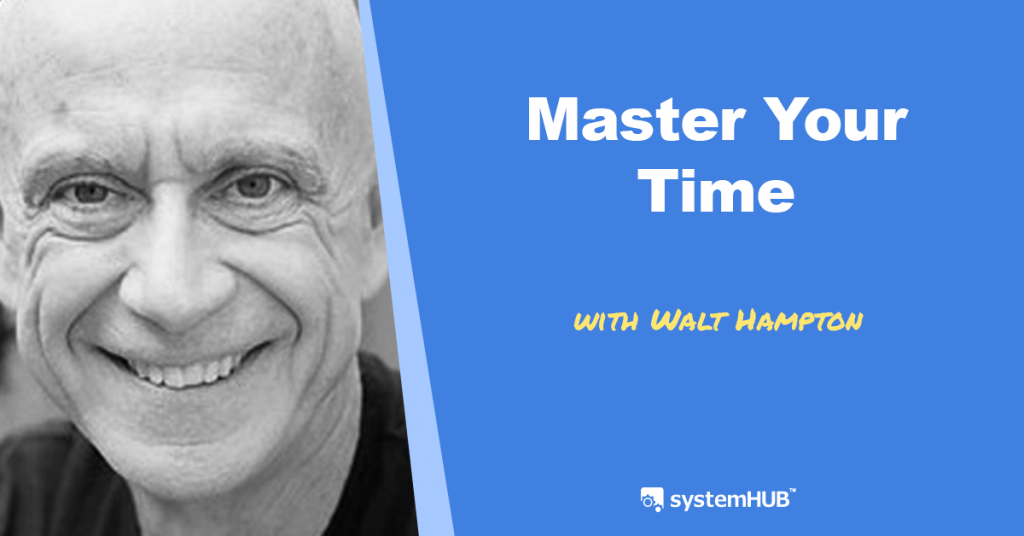Walt Hampton | The Power Principles of Time Mastery
- Department: Management

Overview
We are taught to work harder, longer and faster, in order to achieve most with the time we have.
The system reveals the main principles behind time mastery, which will help you to become a master of yourself and how you show up in time in the long run.
=-=-=-=-=-=
System Architect: Walt Hampton
Website: www.walthampton.com
Generated as part of the www.BusinessSystemsSummit.com
Video
The Process
Step 1: Do Less.
- We all tend to be busy. Busy means you lost control of your time, you are stuck in the urgent at the expense of important.
- Following the Pareto principle that 20% of our efforts lead to 80% of our outcomes, focus on getting clear on that 20%. Put aside and say “No” to the rest of the things that don’t serve the big outcomes.
Step 2: Make “No” your default answer.
- When you say No, you can always reconsider later.
- Define your business and life values using the Values Matrix below.
- Fold a blank piece of paper and fold it in half.
- On the left side write the top 5 things that you value most.
- On the right side write the top 5 places or activities that you spend your time on.
- Most of the stress and overwhelm comes from the fact that there is not a congruity between the two lists.
- With that awareness, begin to say “No” to the things that do not serve the values.
Step 3: Have a plan.
- Stop checking your email very first thing in the morning, and use your inbox as a plan for the day. That puts you in reactivity mode.
- Have a daily, weekly, monthly, plan that honours your business and life values, and that creates boundaries around the things that don’t serve those things that matter.
- Use the plan as a roadmap for your day, your week, your month, the quarter, the year, for your life.
- Weekly planning system to use:
- Write down your plan for the next week on Friday afternoon or on Sunday.
- Question #1: What do you want to experience in the week ahead? This creates a framework of how you show up.
- Question #2: What are the concrete results that you want to create this week? Those are the few things that would lead to the big outcome in your life – finance, business, health and wellness, relationships, spiritual and emotional life.
- Schedule time for those things on your calendar as appointments.
- That plan puts you in execution mode through the week, instead of being in reactivity mode, and holds you on track with what you need to be doing.
- Leave white space between the appointments, to have flexibility when unplanned things happen.
- When something important comes up, and you can’t complete an appointed task, reschedule it.
- At the end of the week do an assessment of what did well and what you will do differently, and adjust for the next week.
Step 3: Use Power Tools.
- Smartphone management: don’t check your email first thing in the morning.
- Work in 60-90 minutes blocks of time.
- This is the best amount of time to focus on a task and be productive.
- Work often expands to the space that you give it, so using blocks eliminates that.
- Don’t multitask, focus on one thing only.
- You lose between 11 and 25 minutes for your brain to switch back focus fully between two tasks.
- Work on batches on repeatable tasks, or tasks with a long span like creating social media content.
Step 4: Have a rest.
- Block out rest days on your calendar.
- You are the most important person in your business. Take care of yourself in order to keep a sustainable peak performance for the long run.
- Don’t do “fake-ations” – fake vacations, where you check emails or do other work. Take time to actively rest or do creative work or things that inspire you.